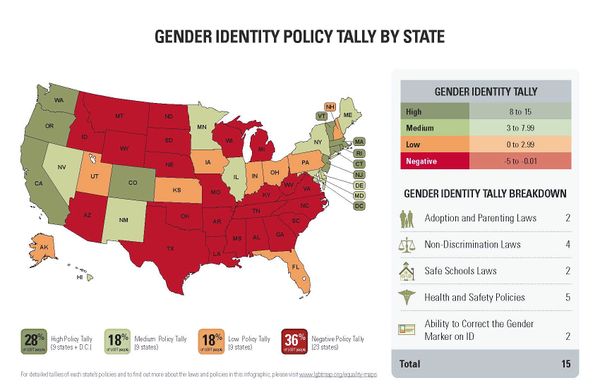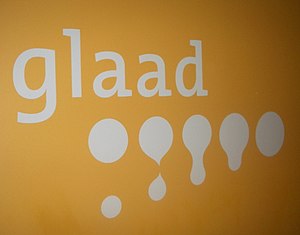The Prevalence of Violence Against Transgender Individuals In the United States
Transgender refers to an umbrella term that encompasses individuals who are intersex, do not identify with their biological sex, do not conform to the heteronormative, binary forms of gender expression or individuals who express gender fluidity. Members of this community are often the targets of hate crimes which are typically violent in nature (physical and/or sexual assault) as opposed to hates crimes against property (vandalism, theft, etc.).[1] Documented cases of murders of transgender individuals in the United States are also on the rise, with at least 21 deaths due to fatal violence in 2015[2], 23 in 2016[3], 28 in 2017, and currently at least 16 in 2018.[4]
Societal Context
Societal expectations regarding gender, and appropriate forms of expression, work to influence how discrimination, violence in particular, manifests so pervasively in the United States. While strict, binary gender identities serves as a general foundation for societal expectations spanning across a diverse group of cultures (i.e. not just the United States), violence stemming from gender identity appears more prevalent in the United States in comparison to similar cultures (such as Canada) due, in part, to a general tendency for perpetrators to perceive gender and sexuality as not mutually exclusive and how cultural norms and legal systems prompt individuals to act on these misconceptions. Studies based off of United States data have revealed incidents of compounding factors of perceived gender incongruities, sexuality and other social constructs such as race or socioeconomic factors which served to motivate violent perpetrators. [5] Negative connotations which are attached to the LGBT community result from a bidirectional relationship of an individual's attitudes and a culture's institutional social dimensions, such as religion and legal systems.[6]
U.S. Legislation
An overall lack of legislative safeguards for transgender rights within the United States works to perpetuate discrimination stemming from the social expectations previously discussed.
The National Equality Map illustrates the degree of these institutional shortcomings by state as it varies depending on federal legislature. While some states have made strides in creating legal precedents for transgender rights and safety there is still some aspect of ambiguity to the practical application of some of these laws. For instance, government recognition of gender identity and the ability to change that aspect on government issued identification serves as a barrier to medical treatment/access as well as multiple other institutions that require an ID.[7] These holes in the safety nets that do exist open up the transgender community to discrimination which helps to conceptualize why there is such a disproportionate amount of violent crime committed against transgender individuals in comparison to their comparably small representation in the general population.
Risk Factors
The prevalence of violent crimes committed against transgender men and women are not strictly limited to gender identity. The intersection of gender identity and additional dimensions such as race, sexuality, socioeconomic status and whether the individual identifies as a woman have been found to play compounding roles in increasing the correlation between violence and transgender individuals. Data collected relating to fatal violent crimes against transgender individuals revealed the following: [8]
Of the 53 transgender victims identified from 2013-2015 in the United States,
- At least 46 were transgender either African American (39) or Latin American (6).
- At least 46 identified as trans-woman, one trans-man and the remained gender nonconforming or unidentified.
- At least 39 were under the age of 31
Further studies conducted in Los Angeles County have yielded similar findings in disproportionately high rates of violence against transgender individuals of color, identified as female and an additional revelation of perceived sexual orientation.[9] Analysis of perpetrator's verbiage implied a nebulous grasp of the distinction between sexuality and gender which only served to add to the possibility of dimensions which perpetuate violence against the transgender community.[9]
As of 2009, the FBI has been required to track and report hate crime statistics motivated by gender identity. It is estimated that reported values are grossly under reported due to a multitude of factors affecting a transgender individual's ability to report criminal offences as well as their access to safe, non stigmatized methods of reporting.[5]
| Motivation Bias | Incidents | Offences | Victims | Known Offenders |
|---|---|---|---|---|
| Total | 6,121 | 7,321 | 7,615 | 5,770 |
| Single-Bias Incidents | 6,063 | 7,227 | 7,509 | 5,727 |
| Gender Identity: | 124 | 130 | 131 | 165 |
| Anti-Transgender | 105 | 111 | 111 | 149 |
| Anti-Gender Non-Conforming | 19 | 19 | 20 | 16 |
| Multiple-Bias Incidents3 | 58 | 94 | 106 | 43 |
Where does the United States stand, world wide?
Currently, the United States sits just below Brazil and Mexico in a world wide review of transgender murders, encompassing 141 of a total 2115 documented cases of transgender individuals murdered between January 2008 and April 2016.[11] While variations in reporting methodology by country as well as transgender representation within each country certainly influences these numbers and should be taken in to account in considering the safety of the transgender community within a given country, such a high murder rate remains disconcerting, especially in comparison to similar, North American populations (Canada) which reported 5 transgender murders within the given time frame.
Effects on Mental Health
Statistical analysis has revealed a disconcertingly high prevalence of suicidal tendencies within the transgender community compared to the general population. Members of the transgender community were found to be more at risk than out groups due to stigmas that stem from misconceptions and stereotypes revolving around the nature of gender dysphoria as well as the resulting environmental conditions that transpire as a result of stigma including lack of resources in terms of health care and family support, high prevalence of homelessness, gender-based discrimination and victimization.[8] Due to the nature of many of these circumstances, the probability individuals will be victims of violent crimes is, again, elevated when compared to the general population. Studies have found that the added facet of experience with violence - specifically gender-motivated violence - only serves to increase an already high risk for suicidal ideation and behaviors. [12]
Resources for Transgender People in Crisis
GLAAD , a non-government organization geared towards fostering LGBT community and protecting the rights of these individuals provides the following resources for transgender people in crisis: [13]
- The Trevor Project's 24/7/365 Lifeline at 866-4-U-TREVOR (866-488-7386) or TrevorChat, their online instant messaging option, or TrevorText, a text-based support option
- The National Suicide Prevention Lifeline at 800-273-TALK (8255)
- Trans Lifeline at 877-565-8860
Summary
Violence against transgender individuals living in the United States exists in elevated rates, as reflected by a combination of statistical analysis and reports of documented criminal activity and fatalities stemming from gender-identity based motivations. This data is collected and reported both on a national and world-wide level and while reporting methodology influences the ability to effectively compare the results and implications of the findings, reports and anecdotal accounts of victimization serve as evidence of a pervasive, discriminatory-based prevalence of violence within the United States. While the attitudes and motivations fueling this violence is not necessarily unique to the U.S. (negative LGBT attitudes exist world wide as a function of religion, social norms, etc.), the lack of explicit legislation addressing gender-identity based discrimination aid in further stigmatization and the manifestation of negative attitudes through physical violence. Additional social dimensions such as race, socioeconomic status, sexuality, etc. serves as compounding factors which magnifies the violence experienced by transgender individuals of multiple intersecting social constructs. The effects of this violence is insidious and can have lasting, detrimental effects on an individual, and the community as whole, including high risk for suicidal behaviors, substance use, and homelessness.[12] While society can always work to deconstruct the misconceptions and heteronormative social scripts which serve to stigmatize the LGBT community, legislators in the United States should also strive to validate the community by better representing them in laws which aid and protect their rights - particularity those which grant transgender individuals the ability to change government issued identification without the need for expensive or unwanted surgical intervention. Additionally, improvements and standardization could be made to reporting methodology of criminal acts to more accurately account for LGBT transgressions - more reliable data can help serve as a basis in the necessity for more legal interventions.
References
- ↑ "2016 Hate Crime Statistics". 2016. Retrieved July 23, 2018.
- ↑ "Violence Against the Transgender Community in 2016". Human Rights Campaign. Retrieved July 23, 2018.
- ↑ "Violence Against the Transgender Community in 2017". Human Rights Campaign. Retrieved July 23, 2018.
- ↑ "Violence Against the Transgender Community in 2018". Human Rights Campaign. Retrieved July 23, 2018.
- ↑ Jump up to: 5.0 5.1 Stotzer, Rebecca L. (May 2009). "Violence against transgender people: A review of United States data" (PDF). Aggression and Violent Behavior. 14: 170–179 – via Elsevier.
- ↑ Herek, Gregory M. (1992). The Social Context of Hate Crimes: Notes on Cultural Heterosexism. Sage Publications Inc. pp. 89–101. ISBN 0-8039-4541-8.
- ↑ "National Equality Map". Transgender Law Center. February, 2017. Retrieved August 1, 2018. Check date values in:
|date=(help) - ↑ Jump up to: 8.0 8.1 "Addressing Anti-Transgender Violence" (PDF). Human Rights Campaign. January 2015. Retrieved July 23, 2018.
- ↑ Jump up to: 9.0 9.1 Stotzer, Rebecca L. (March 2008). "Gender Identity and Hate Crimes: Violence Against Transgender People in Los Angeles County". Sexuality Research & Social Policy. 5: 43–52 – via ProQuest.
- ↑ "Incidents, Offences, Victims and Known Offenders by Motivation Bias, 2016". FBI: UCR. 2016. Retrieved July 29, 2018.
- ↑ "IDAHOT 2016 – Trans Murder Monitoring Update". Transrespect Versus Transphobia. May 2016. Retrieved August 3 2018. Check date values in:
|access-date=(help) - ↑ Jump up to: 12.0 12.1 Barboza, Gia Elise (August 2016). "Physical victimization, gender identity and suicide risk among transgender men and women". Preventive Medicine Reports. 4: 385–390 – via Science Direct.
- ↑ "Transgender Resources". GLAAD. Retrieved August 2 2018. Check date values in:
|access-date=(help)



